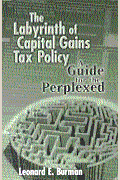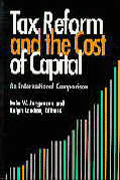Studies in this week’s Hutchins Roundup find that much of the decline of income going to labor is attributable to an aging labor force, official estimates underestimate the effect of an increased capital gains tax rate on federal tax revenue, and more.
Want to receive the Hutchins Roundup as an email? Sign up here to get it in your inbox every Thursday.
Aging can explain much of the decline in the labor share
Standard economic growth theory predicts that the relative shares of income going to labor and capital should remain constant; since the 1980s, however, labor’s share of earnings in the U.S. has noticeably declined. Andrew Glover of the Federal Reserve Bank of Kansas City and Jacob Short of the Bank of Canada attribute this trend to an aging labor force. As workers age, the authors argue, they face increasingly limited employment options, allowing firms to offer them lower compensation. Using data from the Bureau of Labor Statistics and the March CPS on earnings shares and age distribution, the authors find that, on average, the compensation of 60 year old workers relative to their marginal product (their value to the firm) is half what it is for 20 year old workers. Highly unionized industries—where employers have less power— do not exhibit this relationship between age and compensation, consistent with the authors’ model. The authors conclude that aging may account for as much as 59% of the decline in the U.S. labor share since 1980.
Raising the capital gains tax rate would raise more revenue than official estimates suggest
The revenue effects of changes in capital gains tax rates depend on the extent to which higher tax rates discourage investors from realizing gains—the more a tax increase discourages realizations, the lower the revenue gains. Combining data from 1980 to 2016 on capital gains realizations by state with tax rates from the NBER TAXSIM model, Ole Agersnap and Owen M. Zidar of Princeton find that these behavioral effects are smaller than estimated by the Joint Committee on Taxation (JCT), Congress’ official revenue estimator. The authors estimate that a 5 percentage point increase in the federal capital gains tax rate would raise between $18 billion and $30 billion in tax revenue, about twice what is estimated by the JCT. Their estimates suggest that a federal capital gains tax rate of about 40% would maximize federal tax revenues. The authors conclude that raising capital gains tax rates has higher revenue-raising potential and cutting them has higher fiscal costs than is suggested by the JCT.
WWII production contracts narrowed Black-white earnings gaps
Although large racial disparities in labor market outcomes persist today, the earnings gap between Black and white workers narrowed significantly in the 1940s. Anna Aizer of Brown University and co-authors argue that World War II production contracts issued to private firms, which increased labor demand and included anti-discriminatory hiring requirements, contributed substantially to this trend. Using Census data spanning from 1920 to 1970, the authors find that areas that received larger war contracts saw increases in both the wages of Black workers and the share of Black workers employed in skilled occupations, with no accompanying boosts for white workers. In total, these contracts can account for about 25% of the change in the racial composition of skilled work and about 15% of the decline in the racial wage gap over the course of the decade. High school graduation rates for Black children also rose more in areas with larger contracts, suggesting that improved labor market outcomes for parents contributed to the educational gains of Black children after the war.
Chart of the week: Unemployment benefits and race
Quote of the week:
“I have been concerned that unemployment over the last four or five months is not the same thing as unemployment during the big ’80s recession or during the global financial crisis. Because of that, I think people may be misinterpreting – or badly misinterpreting – what’s happening, especially in the U.S., where we used the unemployment insurance program as a way to get pandemic relief to disrupted households. One thing to emphasize here is that, normally, if you look at the unemployed, only 10–15% will describe themselves as on temporary lay-off. The other, bigger group will say: “My job went away and I’m going have to find something.” So, even at the peak of unemployment in the U.S. after the financial crisis in October 2009, unemployment hit 10%, and 85% – maybe 90% – of those people said that they were on permanent lay-off. But if you look at it today, again, we’re at 10% unemployment, but here 60% or more are still saying that they’re on temporary lay-off. They’re basically at home, collecting the insurance, as their business is one that hasn’t opened up again, but they’re expecting pretty much to go back if it does open up again. And if you do get reopening, a lot of those people could get recalled, and the unemployment rate would come down quite a bit faster than anything we saw after the previous crisis,” says James Bullard, President of the St. Louis Federal Reserve.
“This different situation and the difference in the shock means we have to be mentally agile to understand what’s going on and what’s different this time. You know, after the last crisis, it took two years to bring the unemployment rate down just 1.2 percentage points from that peak. Here, you’ve got the unemployment rate going down that much in one jobs report. It’s just a very different animal and a very different situation that is much more fluid than was the case after the global financial crisis.”
The Brookings Institution is committed to quality, independence, and impact.
We are supported by a diverse array of funders. In line with our values and policies, each Brookings publication represents the sole views of its author(s).













Commentary
Hutchins Roundup: Labor share, capital gains taxes, and more
August 20, 2020